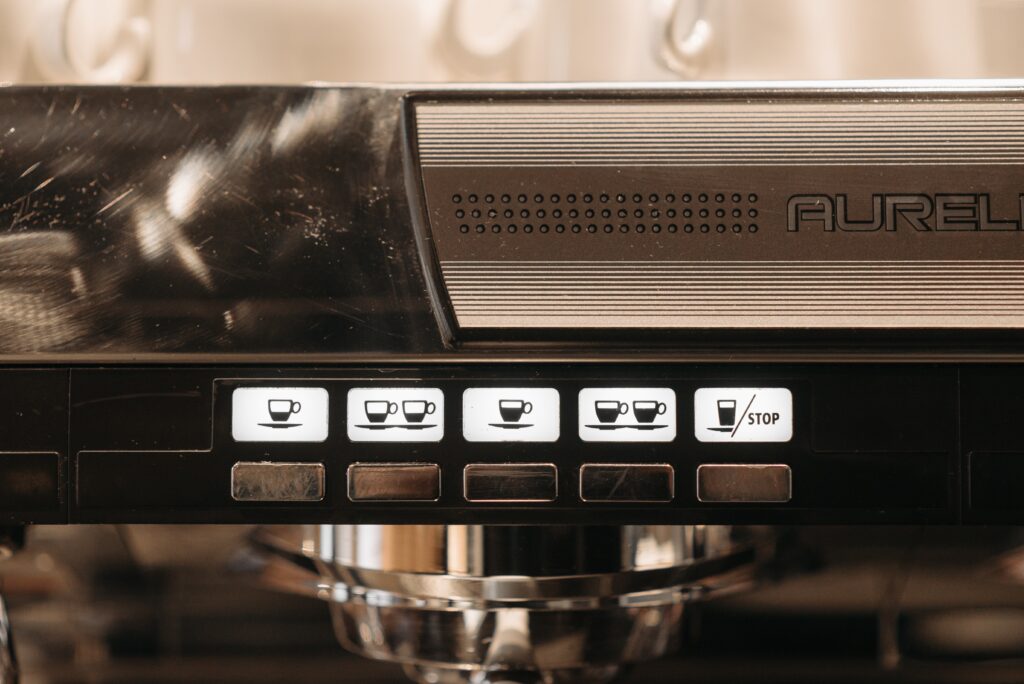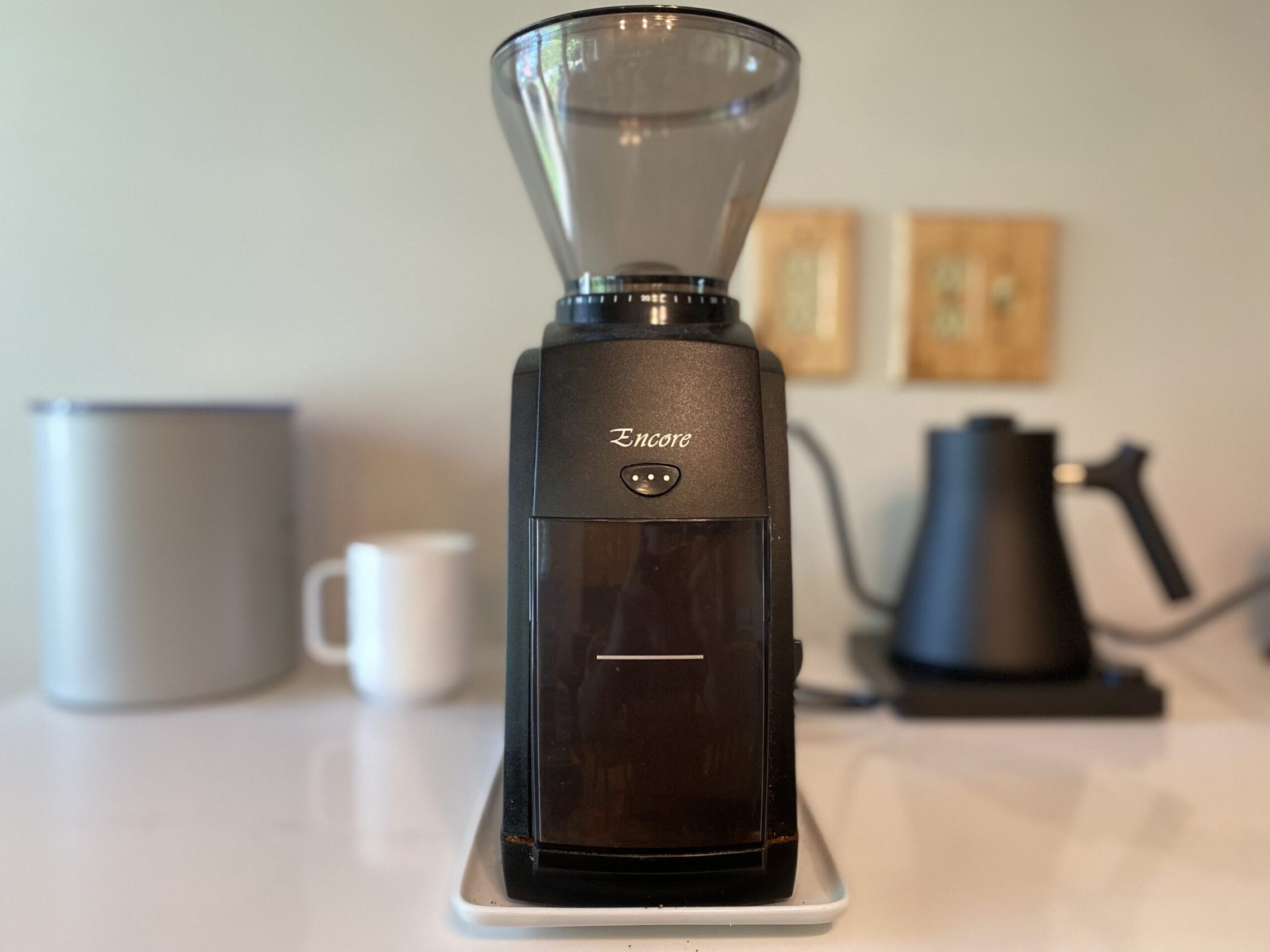If you’re looking to get into espresso, you’re probably as confused and overwhelmed as I was at the beginning of my coffee journey with all of the different kinds of espresso machines. Manual vs automatic vs semi-automatic vs super-automatic vs extra-super-automatic vs extra-super-duper-automatic…okay, those last two aren’t real, but you get the point.
In this article, I’m going to narrow everything down for you and explain the difference between automatic vs manual espresso machines. I’ll look at things from a 1,000-foot view to help you understand the SINGLE main difference between the two — that’s right, there’s really only one mechanical difference — and then zoom in a little bit and talk about the more subtle differences that arise. Let’s get started.
Automatic vs Manual Espresso Machines: What’s the Difference?
Okay, ready? There’s ONE main difference between automatic and manual espresso machines.
Automatic espresso machines use a water pump to create pressure, and manual espresso machines let YOU create the pressure yourself.
That’s it!
Well, not really. That’s the main difference, but there are a lot of other differences that arise because of this distinction.

What are Manual Espresso Machines?
Manual espresso machines are the OGs of the espresso world: they let the user create the pressure needed to force hot water through a puck of compressed, finely-ground coffee to make espresso.
There are different kinds of manual espresso machines, but the most common uses a lever to create the 9 bars needed for espresso.
Direct Lever Espresso Machines
What’s that famous saying from Archimedes? Give me a lever long enough and I’ll make you a perfect espresso on a manual espresso machine? Something like that.
Direct lever espresso machines use a lever that’s directly connected to a piston. The piston pushes water through a cylinder that’s the exact width of the piston. You tamp coffee grounds in the cylinder, pour in hot water, and then push the lever down to generate enough pressure to force the water through the coffee puck and the portafilter.
Direct lever espresso machines can make it difficult to get repeatability in your shot since you’re directly in charge of controlling the pressure throughout the shot. Push harder, and your shot pulls more quickly. Ease off, and your shot takes longer. This leads to a lot of variability.
One of the most popular level espresso machines is the Flair 58 espresso machine.
Spring Piston Espresso Machines
Spring piston manual espresso machines are similar, but the pressure is created when you release the lever. You follow the same process as a direct lever espresso maker: tamp your coffee, pour in your hot water, and press down on the lever.
The difference is that no pressure is created within the group head (a fancy term for the “cylinder” that holds your coffee and water). When you release the lever, the pressure from the lever moving back to its original position is transferred into the group head.
The benefit of this type of manual espresso machine is that your results are repeatable. No matter how slowly or quickly you push down the lever to create the pressure, it won’t affect the pressure on your water because the pressure is only moved to the group head when you release the lever.
The La Pavoni PSW-16 is a good example of a spring piston espresso machine. And, as you might imagine, these are more complex than direct lever machines and are a WHOLE lot more expensive. But they do give you more consistency in your cup.
Pros and Cons of a Manual Espresso Machine
Pros
- Some prefer the aesthetic
- Gives you a hands-on approach to making espresso
- Usually significantly cheaper for similar quality
- Almost never breaks down or needs repair
Cons
- Requires some manual effort to use
- More variability among shots
Different Types of Automatic Espresso Machines
Automatic espresso machines use a water pump to create the pressure needed to make espresso — or, in the case of cheap “espresso” machines, much less pressure than what you need.
Unless you love the aesthetic of a manual espresso machine, you just enjoy the more hands-on approach to making espresso, or you want a machine that will virtually never break down, a semi-automatic machine is probably going to be better than a manual espresso machine.
The existence of the water pump is really the only thing that separates a manual espresso machine from an automatic espresso machine.
However, there are three main categories of automatic machines, which have arisen because lots of people who want the convenience of a machine that does the work for you also want the convenience of a machine that grinds coffee beans and froths milk for you.
There are four main types of automatic espresso machines you can choose from.
Semi-Automatic Espresso Machines
A semi-automatic espresso machine uses a water pump to create pressure, but it gives you, as the home barista, total control over how long the water pump runs. There’s usually a switch or dial to turn the pump on and off, so you can dictate how long your shot is pulled.
The benefit of this over other automatic machines is that you always have access to any type of shot you might want, including ristrettos, espressos, and lungos. Some other automatic machines have presets for these types of coffee shots, but a semi-automatic always gives you these options and an infinite number of options in between. Can you say ultimate customizability?

As compared to a manual espresso maker, semi-automatics make your job easier by creating the pressure for you, drastically reduce the variability among shots, and still give you control over how your shot tastes.
Many also have the option to redirect the heated water to a steam wand, which gives you a built-in mechanism for frothing milk for mixed coffee drinks.
Personally, I use a semi-automatic espresso machine. It takes the grunt work off of my shoulders, but it still gives me control over how my espresso tastes.
The Breville Duo Temp Pro is a shining example of a semi-automatic espresso machine.
Automatic or Fully-Automatic Espresso Machines
An automatic espresso machine — sometimes called a fully-automatic machine to differentiate further from semi-automatic options — is just like a semi-automatic espresso maker, but you DON’T have control over how long the pump runs.
With an automatic espresso machine, you have presets for a select number of shots. Some can only make espresso shots, while others have presets for ristrettos, lungos, double shots (doppios), and more.
Much like semi-automatic machines, automatic espresso machines often have a connected steam wand for frothing or steaming milk.
The Breville Bambino Plus is my preferred automatic espresso machine.
Super-Automatic Espresso Machines
Super-automatic espresso machines do everything that automatic machines do. They usually have presets for different shots, taking the control out of your hands.
However, a super-automatic espresso machine takes automation to the next level by grinding your beans for espresso and tamping your coffee for you. Basically, if you want to be a barista without ever having to learn how to do anything…this might be your preferred option.
These machines grind, tamp, and brew your espresso for you, and some even automate the milk frothing.
Personally, I’m not a fan of these machines. They often have sub-par grinders and tampers, and they take away all of the control you have over your espresso unless you invest thousands.
The Gaggia Brera is a decent option if you’re looking for a budget super-automatic espresso machine.
Pros and Cons of an Automatic Espresso Machine
Pros
- Easier to use than manual machines
- Often come with milk frothers
- Great for people with minimal time to make coffee
- Minimal variability among shots, in most cases
Cons
- Take a lot of the control out of your hands
- More expensive
- More moving parts to break down
- Often have sub-par components to keep prices down
Manual or Automatic Espresso Machines: Which is Better and How to Choose
The answer to this question really depends on your personal preferences. Manual and automatic espresso makers appeal to different types of coffee drinkers because they handle control over the shot and consistency totally differently.
In the following sections, I’ll discuss some factors I think you should consider when you’re deciding between a manual vs automatic espresso machine.
Ease of Use
One of the most important things to think about is how easy you want it to be to make espresso.
With a manual espresso machine, you’ll grind your coffee, tamp it, heat up water, and then put a pretty significant amount of effort into pulling down the lever, adjusting based on your pull time and, ideally, a pressure gauge. This is a lot for some people first thing in the morning.
For some people, though — myself included — making coffee is a key part of my daily routine. On mornings when I hit the road immediately and get coffee on the go, I feel incomplete. Okay, maybe not, but…it does feel like something was missing. If you enjoy how cathartic making coffee is, you might adore a manual espresso maker.
On the other hand, if you’re someone who wants an easier and less demanding cup of coffee — or even someone who wants to push a button and have a decent shot of espresso or mixed coffee drink a minute later — then an automatic or super-automatic machine is probably better for you.

Here are the types of espresso machines in order from most demanding to least demanding:
- Manual
- Semi-automatic
- Automatic
- Super-automatic
Learning Curve
Another important thing to consider is how much time you’re willing to put into perfecting your shot of espresso.
A manual espresso maker might be the simplest in its design, but it is, BY FAR, the most complicated to get right. You’ll need to time your shot using an external timer, internalize the right amount of force you need to put on the lever to time your shot properly, and adjust on the fly.
Any changes in your technique, and you’ll probably notice a difference in your cup. Now, that does mean you have more control over your coffee, but it also means it will take you longer to nail down your brewing process.
If you want the ability to tinker but don’t want total control — or the risk of being overwhelmed — then a semi-automatic machine is probably best for you. And if you want no learning curve at all, then a super-automatic espresso machine will be your jam.
Control Over Your Espresso
The inverse of the learning curve is the control you get over your cup: the longer the learning curve and the more you can potentially mess up, the more control you have over how your coffee tastes.
A manual espresso machine gives you total control because you can adjust the pressure and shot time in real time. A semi-automatic lets you adjust the shot time but not the pressure. Automatic machines take away all control over the brewing process, and super-automatic machines don’t even give you control over grind size.
Below are the options you have in order from most control to least control:
- Manual
- Semi-automatic
- Automatic
- Super-automatic
Your Preferred Coffee Drinks
We also recommend you consider the types of coffee drinks you prefer in the morning because manual machines don’t handle milk frothing, and some automatic machines don’t either.
If you usually drink black shots of coffee, then don’t worry about this.
However, if you like lattes, cappuccinos, or other mixed drinks, then you might want to consider an automatic espresso machine, which usually has a milk frother or milk steamer built in. Super-automatic espresso machines sometimes even have presets that you can choose based on your preferred drink, and everything — including milk frothing — is done for you.

That’s not to say that you can’t use manual espresso machines to make mixed coffee drinks, but you will need to buy additional equipment.
Price
Finally, you might want to consider your budget. Manual espresso makers have far fewer moving parts and will almost always provide far more value for the money. You can get a high-end manual machine for under $250, whereas a high-end super-automatic machine can cost several thousand dollars.
If you’re on a tight budget and don’t mind a learning curve, then a manual machine is probably going to suit you best.
Wrapping Up: Manual vs Automatic Espresso Machines
So…there you have it. The main difference between automatic and manual espresso machines is that the former uses a water pump to create pressure, and the latter lets you create the pressure with a lever.
Manual espresso machines give you total control over your espresso, but YOU control the pressure and shot time. You’ll need to choose a coffee grinder to grind your own beans, time your shot, and monitor and adjust the pressure.
The different types of automatic espresso machines take different parts of that process out of your hands. Semi-automatic machines create the pressure for you, automatic machines create the pressure and time the shot for you, and super-automatic machines do everything for you, including grinding your beans and frothing your milk.
Personally, I like a semi-automatic machine because it makes my job easier without taking away my control. You might prefer a different kind, though, if you want complete control or ultimate convenience.
FAQ
Are automatic or manual espresso machines better?
It’s really up to personal preference. Manual machines give you total control over how your espresso comes out but require more work and have a steeper learning curve. Automatic machines make brewing easier and less complicated, but they take control over your espresso away from you.
Do super-automatics make good espresso?
In most cases, no. Super-automatic espresso machines are usually geared toward people who want to simplify espresso. While they succeed in that arena, they often have sub-par components — especially grinders — that aren’t super consistent and break down rather quickly. If you want a really good super-automatic, expect to pay thousands.
Do coffee shops use automatic espresso machines?
In most cases, yes. Big-time coffee shops like Starbucks and Dunkin rely on automatic espresso machines to ensure consistency and speed up the brewing process. Specialty coffee shops might use a semi-automatic machine or even a manual espresso machine, but this is exceedingly rare.


